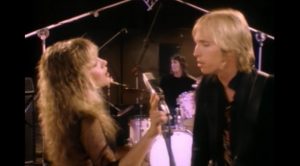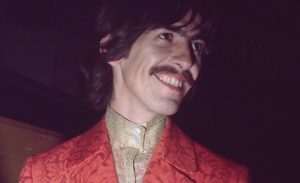The Unexpected Reason Jackson Brown Gave “Take It Easy” To Eagles

Eagles - 4K 1S 0K / Youtube
Despite having such a title for their debut single, things weren’t that easy when Eagles started recording their debut album. They were desperate for songs.
But luck was on their side. Glenn Frey had a neighbor who was working on a song called “Take It Easy”, also for his first album. Frey told this downstairs neighbor, Jackson Browne, that the song was coming along great.
After seeing Frey help him easily create a key lyric, Browne turned over the song to his friend and his new band. And the rest was classic rock history.
“It was their first single,” Browne shared, “And what those guys did with it was incredible.”
Glenn Frey helped complete the song
Clearly, Frey impressed Browne. Frey also knew “Take It Easy” was a great song, and when his neighbor played him a more polished but still unfinished song, he asked if his band could use the song when he was done.
Browne agreed with the condition that they complete the song. Frey and his band quickly worked on the song, wrote the final verse, and recorded it for their self-titled debut album.
But before they recorded “Take It Easy”, Eagles played the song live as part of their sets at a club in Aspen, Colorado. When they did finally record it, the song had taken on a more pronounced country vibe.
Apart from coming up with the second verse lyric that had eluded Browne for so long (“It’s a girl, my lord, in a flatbed Ford, slowing down to take a look at me”), Frey also introduced stretching out the “e” in “easy”.
Take It Easy – Eagles
🎶Well, I’m a-standing on a corner
In Winslow, Arizona🎶 pic.twitter.com/uHomX07fcR— Kristie🌹 (@Kristie_Rose18) September 19, 2023
Frey learned songwriting from Browne
In History of the Eagles, a 2013 documentary by Alison Ellwood and Alex Gibney, Frey shared that he learned how to write songs from Browne.
“I didn’t really know how to write songs. I knew I wanted to write songs, but I didn’t know exactly, did you just wait around for inspiration, you know, what was the deal? I learned through Jackson’s ceiling and my floor exactly how to write songs,” the singer-songwriter revealed.
Frey had heard and listened to Browne playing the first verse of a song 20 times until he achieved the sound he wanted.
“And I’m up there going, so that’s how you do it? Elbow grease. Time. Thought. Persistence,” the Eagles guitarist added.
Jackson Browne and Glenn Frey, 1974 pic.twitter.com/LLQ0Tyn9nI
— Legends Of Classic Rock (@lofcr1) August 28, 2023
Browne’s inspiration for “Take It Easy”
In the late 1960s, Browne was establishing himself as an up-and-coming songwriter. Initially, he was part of a group called Nitty Gritty Dirt Band before embarking on a solo career.
It was in 1971, while recording his first self-titled album, that the inspiration for “Take It Easy” struck during a break in the recording sessions.
Browne recounted the story in a 2010 interview with Uncut magazine, saying, “I took a road trip in this old beat-up Willys Jeep and I went to Utah and Arizona. On that trip, I started to write “Take It Easy”.”
When he returned to Los Angeles, he continued working on the song but couldn’t quite complete it. It was at this point that his close friend Frey paid him a visit, and Browne shared his latest musical idea.
Eagles, Jackson Browne and Linda Rondstadt on stage, 1976. Photo from Getty Images. pic.twitter.com/4KQISKmWX8
— Classic Rock In Pics (@crockpics) June 18, 2023
“Take It Easy” became a classic hit and a concert staple
“Take It Easy” became the Eagles’ debut single on May 1, 1972, and served as the opening track on their self-titled debut album. The song quickly gained popularity due to its distinctive country-rock sound, peaking at No. 12 on the Billboard Hot 100 and marking the beginning of a series of hits for the Eagles.
This Eagles classic has also since become one of their iconic songs, featured on all of their live and compilation albums. This track holds a place among The Rock and Roll Hall of Fame’s 500 Songs that Influenced Rock and Roll.
Jackson Browne later included a version of the song as the leading track on his second album, For Everyman in 1973 and even released it as a single, though it didn’t achieve chart success.
Glenn Frey regarded the song as one of Eagles’ most significant tracks, viewing it as an excellent introduction to the band on their inaugural album.
During an interview with Bob Costas, Frey shared that the song symbolized “America’s first image of our band with the vistas of the Southwest and the beginnings of what became country-rock.”











